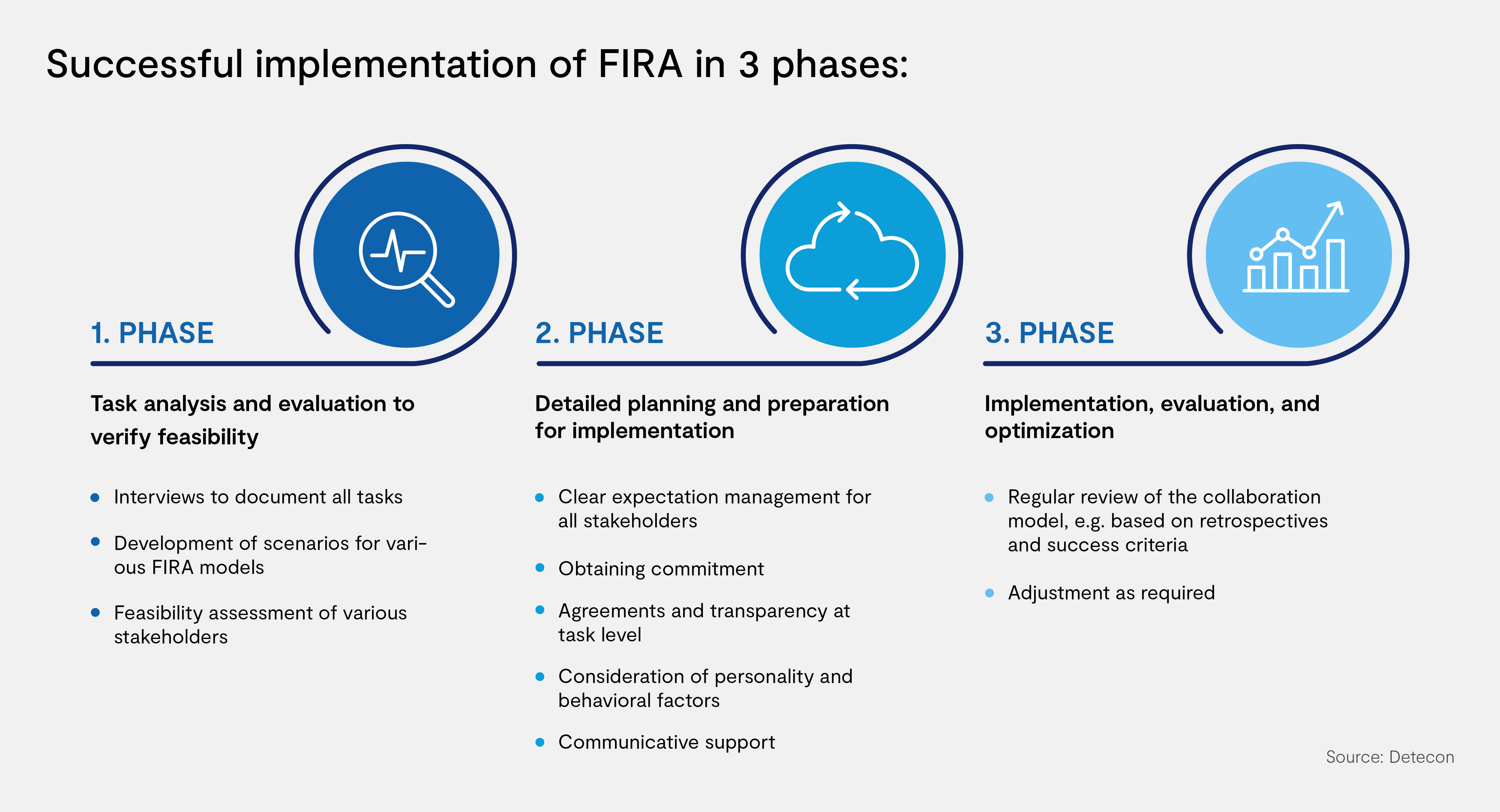Leadership in reduced working hours refers to working time models in which a manager works less than 100 percent of the working hours in the management position. These models range from part-time and co-management models (dual leadership) to delegation models — and are becoming increasingly popular in the working world. But what aspects need to be kept in mind if leadership in reduced working hours is to be successful in practice?
Leadership in reduced working hours refers to working time models in which a manager works less than 100 percent of the working hours in the management position. These models range from part-time and co-management models (dual leadership) to delegation models — and are becoming increasingly popular in the working world. But what aspects need to be kept in mind if leadership in reduced working hours is to be successful in practice?
Concept and models
Leadership in reduced working hours means that managers work less than 100 percent of their working hours in their actual management function.1 This may or may not mean that they work part-time. In the additional time now available to them, they can pursue other activities and tasks — and this can be either a temporary or a permanent model.
A distinction is made among the following models:
- Reduction of management tasks: The number of tasks is reduced — e.g., by delegating certain tasks or even entire projects to other employees or departments.
- Co-leadership: Two people share a leadership position with an equal balance of power. To this end, they divide their tasks according to certain criteria and take time to reach agreements so that they can assume joint responsibility. This model can be implemented in a number of different ways.
- Distributed leadership: The manager delegates certain tasks to employees, but the (unequal) balance of power remains unchanged.
There are many other terms to describe the division of management tasks.2
The potential of leadership in reduced working hours
There is tremendous potential inherent in leadership in reduced working hours, particularly for the reconciliation of work and family, that goes well beyond this obvious scenario:
- Leadership in reduced working hours can also serve as an important tool for offering talented young people career prospects and fostering them as part of an internship or when they are starting a new management role.
- Leadership in reduced working hours is also an option for lessening the stress of especially challenging management positions or for the gradual reintegration of managers after a longer period of illness.
- Executives approaching retirement age can enjoy the benefits of reduced working hours, and the employer can ensure the transfer of knowledge to the next generation.
- In co-leadership models, leadership in tandem can train the ability to reflect (one of the most important leadership skills) and result in broader risk management, ultimately leading to improved handling of complex situations and encouraging innovation.3 Further benefits include stronger social support and greater opportunities for feedback and problem solving.
Successfully implementing leadership in reduced working hours
Leadership in reduced working hours and the related implementation models are becoming increasingly popular. The path to this form of work organization normally breaks down into three phases:

1. Task analysis and evaluation to verify feasibility
The key question when starting the feasibility check is this: “Can task XY be carried out successfully in a model of leadership in reduced working hours?” Before this question can be answered, all tasks of the management position or department will have to be defined and documented, e.g., in the form of interviews.
Once this foundation has been laid, scenarios for various models of leadership in reduced working hours can be developed in cooperation with the pertinent parties, whereby a decision concerning the handling of every specific task (allocation, delegation, etc.) must be made. In this phase, it is important not to fall into the evaluation mode too quickly (“It won’t work anyway, it’s far too time-consuming”); the approach to the process must be open and creative.
In the final step, the parties evaluate the models that have been developed and rank them for feasibility according to a three-tier scale.
The feasibility check should be carried out by the managers who will potentially reduce their working hours in collaboration with their employees and supervisors. The result will be a more differentiated image of feasibility specific to each task, and any possible resistance (“Part-time in this position? Never!”) can be constructively countered. The position and its specific tasks must at all times be the clear focal point.
2. Detailed planning and preparation for implementation
The success and failure factors for the actual implementation are manifold, as are the many aspects that should be taken into account.4
Clear management of the expectations for the implementation is one of the most important factors in setting the right course for the implementation of the leadership in reduction of working hours, especially at the beginning. One point should be made unambiguously clear: leadership in reduced working hours is not synonymous with a “career hiatus.” Nor does leadership in reduced working hours imply that all management tasks must simply be completed more quickly. Rather, leadership in reduced working hours aims to ensure that management tasks can be performed during reduced working hours thanks to clearly defined agreements regarding their scope and the management constellation required to accomplish them.
Successful implementation models should also be accompanied by effective communication that illustrates the opportunities of the model, establishes role models, and generates an organizational culture that is open to leadership in reduced working hours.5
This includes obtaining the commitment of senior management to the model of leadership in reduced working hours.
From the task level perspective, regular agreements and transparency regarding attendance/absence and regular coordination meetings are highly recommended for co-management models. In delegation models, the assignment of specialist tasks is especially straightforward while personnel management tasks (such as agreement of performance targets) should not be delegated if possible.6 Standard tasks (e.g., administrative personnel managetament) are better shared between the co-leaders, whereby in contrast complex and critical processes (e.g., project management, important team/department meetings) should be joint responsibilities.
At the personal level, a variety of factors relating to the behavior and characteristics of the manager can undoubtedly influence success — just as in the case of “classic leadership.” Self-management,7self-reflection, and empowerment of employees,8 are particularly important, but so are the separation of private and professional life, high work commitment and performance, and management experience. Not surprisingly, a high level of egoism tends to have a negative effect.9
When looking for a person who will become part of a co-leadership model of leadership in reduced working hours, professional qualifications should not be the sole criteria under consideration; it is important to ensure that the person is a team player, open and loyal, and able to cope well with uncertainty. Ideal partners for leadership in reduced working hours have previously been successful in cooperating in the past.
Departments that are flexible and open to change and innovation are the best candidates for management by shared leadership. If the aim is to lead two purviews in a system of reduced working hours, it is advantageous if they are similar in terms of content and the management roles are not in conflict with each other.
3. Implementation, evaluation, and optimization
Continuous evaluation is indispensable for the long-term success of any implementation of the leadership in reduced working hours model as this is the means by which issues can be identified and the concept can be constantly adapted and improved. A recommended method for its conduct is the retrospective familiar from agile working, which should be carried out once a month. In addition, defined criteria for evaluating the success of the FIRA model are useful.
Benefits for organizations and employees
Organizations are facing numerous challenges today: demographic change, a shortage of specialists and managers, the various demands of Generations X to Z, work-life balance issues, the introduction of flexible working time models, purpose, and mental health. The requirements of employees must be continuously reconciled with those of organizations. Models of leadership in reduced working hours can support the achievement of this balance, generating possible approaches for staff retention and personnel development at all stages of people’s as well as having a positive impact on employer attractiveness. Ultimately, this both serves the financial interests of organizations and gives due consideration to socio-political concerns.
This article describes an initial overview of leadership in reduced working hours. More in-depth insights can be found in Ellwart, T., Russell, Y., Blanke, K. (2023). Führung in reduzierter Arbeitszeit (FIRA) — Co-Leitung, Teilzeitmodelle und Delegation von Führungsaufgaben. In: Felfe, J., van Dick, R. (eds) Handbuch Mitarbeiterführung. Springer Reference Psychologie. Springer, Berlin, Heidelberg. https://doi.org/10.1007/978-3-642-55213-7_44-2
We would also like to draw your attention to the latest edition of the Employee Management Handbook [Handbuch Mitarbeiterführung], which contains practical business psychology knowledge for specialists and managers.
Sources:
1. Moldzio, T., Ellwart, T., Hofer, A., Burkhart, E. M., Endres, E. C., Henn, S., Kaup, S., Merz, S., & Rynek, M. (2016). Führen in reduzierter Arbeitszeit: Chancen und Risiken für die Personalarbeit der Zukunft. Wirtschaftspsychologie aktuell. Zeitschrift für Personalmanagement,1, 13–16.
2. Ellwart, T., Russell, Y., Blanke, K. (2023). Führung in reduzierter Arbeitszeit (FIRA) – Co-Leitung, Teilzeitmodelle und Delegation von Führungsaufgaben. In: Felfe, J., van Dick, R. (eds) Handbuch Mitarbeiterführung. Springer Reference Psychologie . Springer, Berlin, Heidelberg.
3. Ellwart, T. (2019). Altersdiversität in Teams – (K)ein Erfolgsfaktor? [Age diversity in teams – A factor of success?]. In A. Beinicke & T. Bipp (Hrsg.), Strategische Personalentwicklung. Meet the Expert: Wissen aus erster Hand (S. 21–41). Springer.
4. Ellwart, T., Hofer, A., & Moldzio, T. (2016a). Führung in reduzierter Arbeitszeit: Gesellschaftspolitisch erwünscht oder praktisch begrenzt? Gleichstellung in der Praxis, 12(3), 15–19.
5. Bessing, N., Gärtner, M., & Schiederig, K. (2017). Reduzierte Arbeitszeit in Führungspositionen: Empirische Befunde und Erfolgsfaktoren in der 360-Grad-Perspektive. In A. Karlshaus & B. Kaehler (Hrsg.), Teilzeitführung. Rahmenbedingungen und Gestaltungsmöglichkeiten in Organisationen (S. 83–100). Springer Gabler.
6. Köster, G. (2017). Persönliche Kompetenzen und unterstützende Rahmenbedingungen für eine gelungene Teilzeitführung. In A. Karlshaus & B. Kaehler (Hrsg.), Teilzeitführung. Rahmenbedingungen und Gestaltungsmöglichkeiten Organisationen (S. 127–140). Springer Gabler.
7. Bessing et al. (2017)
8. Köster (2017)
9. Werther, S., & Brodbeck, F. (2014). Geteilte Führung als Führungsmodell: Merkmale erfolgreicher Führungskräfte. Personal Quarterly, 1(66), 22–27.







